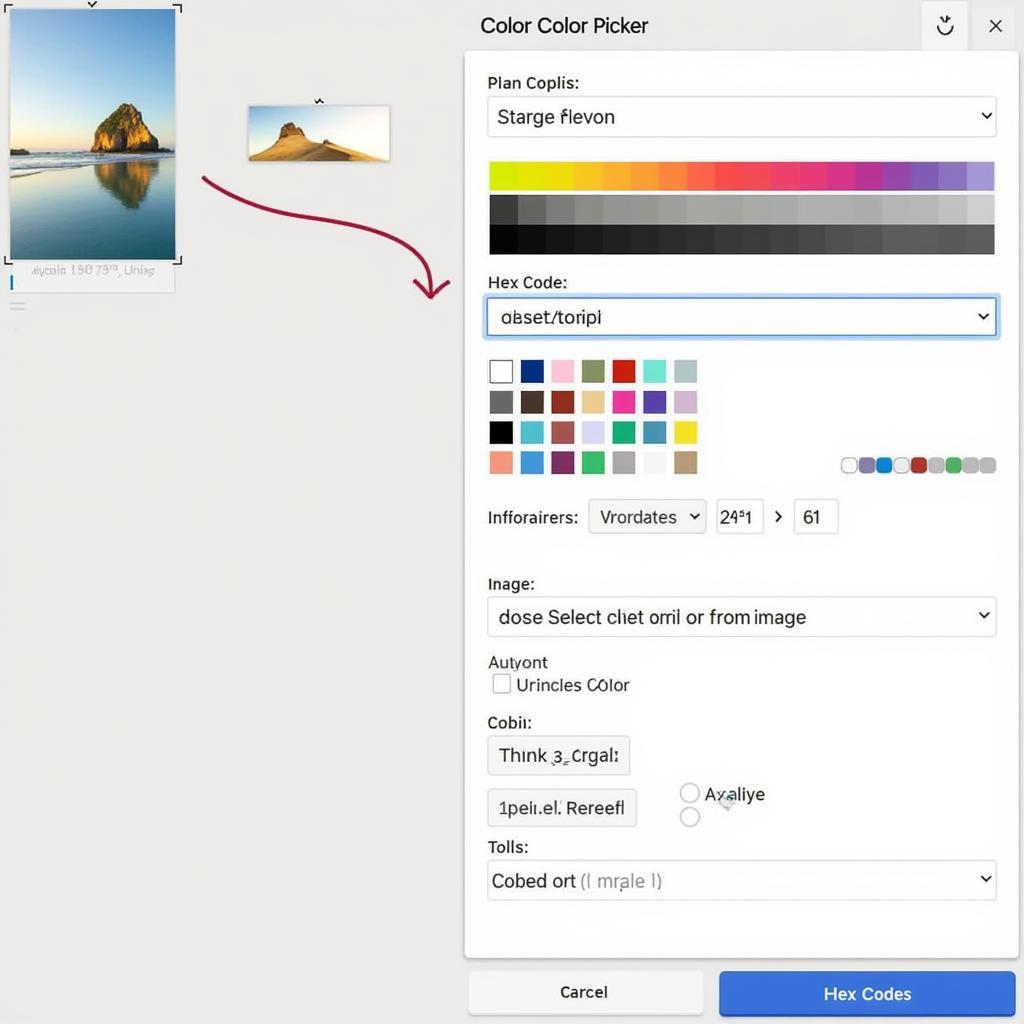Finding the right color code can be crucial for a variety of projects, from touching up a scratch on your car to perfectly matching the shade of your living room walls. Knowing how to identify and understand color codes empowers you to recreate specific hues with precision. Whether you’re a DIY enthusiast, a professional designer, or simply looking to refresh your space, understanding color codes opens up a world of possibilities.
Different Color Code Systems: Understanding the Basics
There are various methods for representing colors numerically, each with its own strengths and applications. Understanding these systems is the first step in knowing How To Know Color Code.
- Hex Codes: Hexadecimal color codes are widely used in web design and digital graphics. They are six-digit codes preceded by a hash symbol (#), representing the intensity of red, green, and blue light. For instance, #FF0000 represents pure red.
- RGB Values: RGB (Red, Green, Blue) is another common system, expressing colors as a combination of red, green, and blue light, each with a value between 0 and 255. (255, 0, 0) would also represent red in this system.
- CMYK Values: CMYK (Cyan, Magenta, Yellow, Black) is primarily used in print media. It represents colors as a percentage of each ink color, used to create the final printed color.
- RAL Codes: The RAL color matching system is widely used in architecture, construction, and industry to define standardized colors for paint and coatings. These are four-digit numerical codes.
- Pantone (PMS) Colors: Pantone is a proprietary color matching system widely used in graphic design and branding. It offers a standardized set of numbered colors, ensuring consistency across different mediums.
How Do I Find a Color Code? Practical Approaches
Knowing which color code system you’re dealing with simplifies the process of identifying the specific code. Here’s a breakdown of common scenarios:
From Physical Objects
- Paint Cans: Most paint cans have the color code printed directly on the label, often alongside the color name and brand information. This is typically an alphanumeric code specific to the manufacturer. Check similar to how do i know my car color code.
- Fabric Swatches: Fabric swatches may come with attached labels indicating the color code, often using a Pantone or manufacturer-specific system.
- Printed Materials: If you’re trying to match a color from a printed piece, a Pantone color book can be a valuable tool. By comparing the printed color to the swatches in the book, you can identify the closest match.
From Digital Sources
- Websites: Web browsers offer built-in tools or extensions that can identify the hex code of any color displayed on a webpage. Simply use the color picker tool to select the desired color, and the hex code will be displayed.
- Image Editing Software: Programs like Photoshop or GIMP allow you to sample colors from digital images and display the corresponding RGB or hex codes.
- Online Color Pickers: Numerous online tools allow you to upload an image or enter a color code in one system and get the equivalent in other systems.
 Using a Digital Color Picker Tool
Using a Digital Color Picker Tool
Using a Color Sensor Device
Color sensor devices, also known as colorimeters or spectrophotometers, provide the most accurate way to determine a color code. These devices measure the reflected light from a surface and translate it into numerical color values.
How to Know the Color Code of Your Car
Finding your car’s color code is essential for touch-up paint or repainting. The code is usually located on a sticker or plate in several common locations, such as the driver’s side doorjamb, glove compartment, or under the hood. The code format varies between manufacturers but is typically an alphanumeric sequence. You can also look for information about how to know the color code of my car.
What if I Can’t Find the Color Code?
If you can’t locate the color code, your car’s VIN (Vehicle Identification Number) can be helpful. Contact your dealership or use an online VIN decoder to find the original paint color code. You can also find further information at how to find paint color by vin.
Tips for Accurate Color Matching
- Lighting Conditions: Lighting plays a significant role in how colors appear. Always try to match colors under consistent lighting conditions.
- Surface Texture: The texture of a surface can affect how a color looks. Be mindful of this when matching colors on different materials.
- Digital vs. Physical: Remember that colors displayed on a screen can differ from their printed counterparts. Calibration tools can help minimize these discrepancies. You can find information on color manipulation on the web, much like how to change hyperlink color in html.
Conclusion
Knowing how to know color code opens up a world of creative possibilities. By understanding the various color systems and utilizing the right tools, you can achieve accurate color matching for any project, from home renovations to professional design work. With a little practice, you’ll be able to confidently navigate the world of color codes and bring your vision to life.
FAQ
- What is a hex code?
- How do I find the RGB value of a color?
- What is the difference between CMYK and RGB?
- Where can I find my car’s paint color code?
- What is a Pantone color?
- How does lighting affect color perception?
- How can I ensure accurate color matching between digital and physical mediums?
Need Assistance?
Contact us for expert advice on color matching and selection. Call: 0373298888, Email: [email protected] or visit us at 86 Cầu Giấy, Hanoi. Our 24/7 customer service team is always ready to help.

